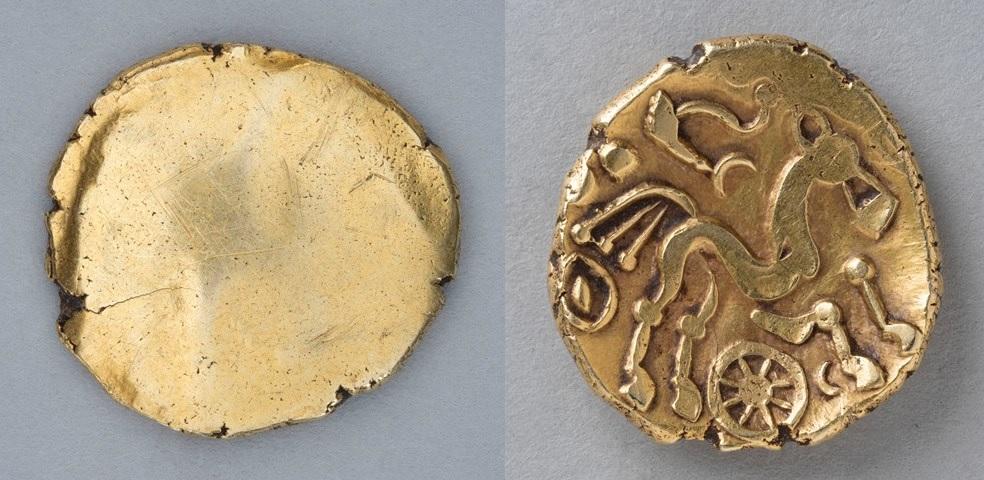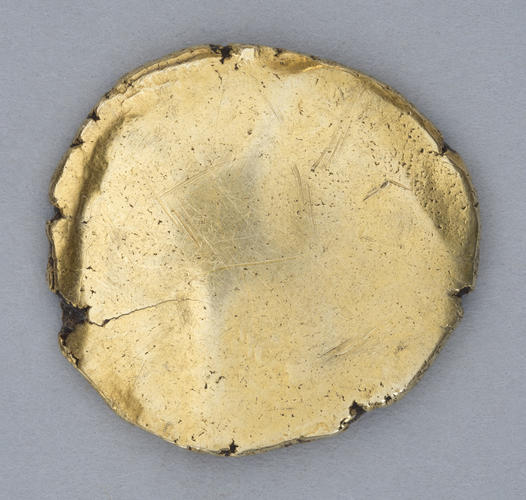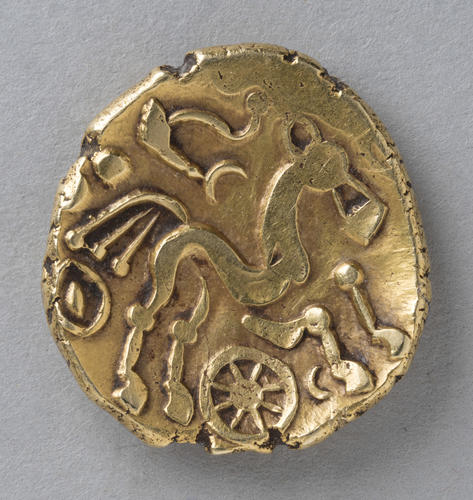-
1 of 253523 objects
Great Britain, celtic plated gold stater, British 'Remic' type, c.50 B.C c. 50 BC
1.8 cm (diameter) | RCIN 444087

Great Britain, celtic plated gold stater, British 'Remic' type, c. 50 B. C c. 50 BC

Great Britain, celtic plated gold stater, British 'Remic' type, c. 50 B. C c. 50 BC

Great Britain, celtic plated gold stater, British 'Remic' type, c. 50 B. C c. 50 BC



-
This Celtic gold stater was struck in 53–52 BC, just after Julius Caesar’s second invasion of Britain in 54 BC. It was probably produced by the Regini and Atrebates tribes who were based in central southern England, around Chichester and Silchester. The reverse design on this Celtic coin evolved from the Greek prototype into a group of objects around a sinuous, semi-abstract figure of a horse; the charioteer became a dot, his arms and hands developed into a stirrup shape, while the chariot was simplified into an eye shape, a wheel and a small crescent. Celtic art was more concerned with abstract shapes, patterns and symbols.
Object details
Obverse: Convex, blank except for a few faint raised lines.
Reverse: Crude horse galloping right, triple tail, wheel and small arc below; eye shaped symbol behind, stirrup shaped symbol and two pellets above horse (derived from figure of a charioteer); the whole derived from a Greek gold stater of Philip II of Macedon depicting Philip competing at the Olympic Games c.50 B.C; concave.